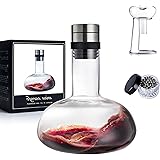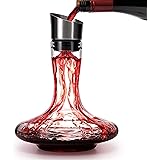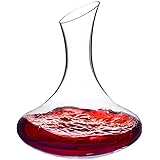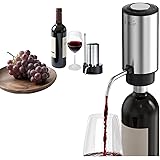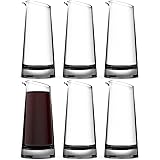Have you ever felt lost gazing at a vast wall of wine? Many beginners experience this confusion. Fortunately, choosing great wine does not need to be a guessing game. The video above offers an excellent starting point. It equips you with the confidence needed for your wine journey. Let us expand on these foundational concepts. You can then navigate the wine world like an expert.
Understanding Wine Basics: From Grape to Glass
Wine truly begins with fermented grapes. This simple fact holds many secrets. While other fruit wines exist, “wine” always means grapes. Wine grapes are special. They differ significantly from table grapes. They are smaller and much sweeter. Their skins are thicker, and they contain seeds. These traits are crucial for complex flavors.
Wine grapes also behave uniquely. They stop ripening after picking. This means winemaking is an annual event. It happens right after the harvest. The vintage date on a bottle tells this story. It marks the specific year grapes were harvested. This date is more important than many realize.
Decoding Wine Vintage and Its Impact
Vintage variation affects wine quality. Madeline’s first wine mistake highlights this. She bought a 2005 Côtes du Rhône. It was a rich, fruit-forward red wine. The 2006 vintage tasted completely different. The weather patterns were the cause. 2005 was warm and dry. This led to riper, bolder fruit. Conversely, 2006 was cooler. It yielded lighter-bodied, more tart wines. Understanding vintage helps you choose. Pay attention to the weather during that year. This offers a powerful clue to the wine’s character.
Climate’s Influence on Wine Flavor Profiles
Where a wine comes from deeply impacts its taste. The world’s wine regions span a “wine belt.” This area lies between 30 and 50 degrees North latitude. It also covers 30 to 45 degrees South. This is where Vitis vinifera, the primary wine grape species, thrives. Different climates within this belt foster distinct wine styles.
Warm climates produce bolder wines. Regions like Barossa, Australia, exemplify this. Paso Robles, California, is another example. Grapes ripen more here. They develop higher sugar content. This results in fuller-bodied, fruit-forward wines. Think rich red berry and dark fruit notes.
Conversely, cool climates create elegant wines. Champagne, France, is a prime example. The Willamette Valley in Oregon is similar. Grapes have less sugar here. Wines are lighter-bodied and more tart. These regions excel at crisp whites and nuanced reds. This knowledge is a game-changer. It explains why the same grape can taste different. It is a secret to finding wines you love.
Exploring Key Wine Styles for Every Palate
Over a thousand commercially viable wine varieties exist. Memorizing them all is daunting. Instead, grouping them into styles simplifies things. This approach empowers you to communicate preferences. It also helps you explore new wines confidently. Here are nine fundamental wine styles.
Full-Bodied Red Wines: The Powerhouses
These are the “heavy creams” of the wine world. Their body comes from alcohol and tannins. Tannins are plant polyphenols. They contribute structure and texture. Too much tannin can be astringent. Just the right amount is magical. They also carry many health benefits.
-
Benchmark: Cabernet Sauvignon. This is the most widely planted grape. It offers classic bold red characteristics.
-
Value Alternative: Petite Sirah (USA). For international value, try Alicante Bouschet from Portugal. These lesser-known options deliver great flavor for the price.
Medium-Bodied Red Wines: Food’s Best Friend
These wines are often called “food wines.” They balance fruit, acidity, and tannin. Their flavors lean towards red fruits. Think raspberry, cherry, and plum. They complement a wide range of dishes. Their fresh acidity cuts through rich foods.
-
Benchmark: Côtes du Rhône. This blend uses Grenache, Syrah, and Mourvèdre. It’s a regional wine from Southern France. This blend is now grown worldwide.
-
Value Alternative: Montepulciano d’Abruzzo (Italy). This wine consistently offers exceptional quality. It is a fantastic choice for its price point.
Light-Bodied Red Wines: Delicate and Aromatic
These wines are perfect for tannin-sensitive palates. They appear light and delicate. You can often see through the glass. They are served in large, globe-shaped glasses. This helps capture their airy fruit and floral aromas. These wines are known for elegant complexity.
-
Benchmark: Pinot Noir. This grape offers subtle red fruit notes. It often has earthy undertones. Pinot Noir is a global favorite. However, it can be quite expensive.
-
Value Alternative: Frappato from Sicily. This grape shares Pinot Noir’s charm. Its lesser-known status makes it more affordable. It is a delightful discovery.
Sparkling Wines: The Celebratory Bubbles
Sparkling wines come in many styles. They range from dry (Brut) to sweet (Demi-Sec). These wines are technically complex. They require two fermentations. One creates alcohol. The second produces the signature bubbles. They are perfect for celebrations or simply enjoying life.
-
Benchmark: Champagne. This regional wine is from France. Its method is emulated globally. Champagne perfected sparkling winemaking techniques. It sets the standard for quality.
-
Value Alternative: Cava (Spain). Cava uses Champagne’s traditional method. It uses Spanish grapes. It offers excellent value and similar quality. It is a fantastic budget-friendly choice.
Light-Bodied White Wines: Crisp and Refreshing
These dry white wines are zesty. They burst with citrus and apple notes. Their crispness defines the category. Winemaking often uses stainless steel. This preserves their fresh character. Oak aging is rare for this style. They offer some of the best wine values.
-
Benchmark: Pinot Grigio (Italy/France). Known as Pinot Gris in France, it is popular worldwide.
-
Value Alternative: Picpoul de Pinet (France). This regional French wine offers incredible taste for its price. It sings on the palate.
Full-Bodied White Wines: Rich and Creamy
These whites are rich and toasty. They offer a creamy texture. Chardonnay is a classic example. Its body comes from oak aging. The winemaking process is key. Oak barrels impart buttery flavors. Many white wines aged in oak gain this character. They are often enjoyed with heartier dishes.
-
Benchmark: Chardonnay. While it grows globally, its full-bodied expression is often barrel-aged. This process creates its signature richness.
-
Value Alternative: Oak-aged Grenache Blanc. This offers a unique and delicious alternative. It delivers similar complexity at a better price.
Aromatic White Wines: Fragrant and Expressive
Some white grapes are intensely aromatic. They earn their own category. These wines can range from dry to sweet. Their perfumed aromas mislead some. Notes of orange blossom and peach are common. They are often enjoyed as an aperitif.
-
Benchmark: Riesling. Germany is its traditional home. German Rieslings are hauntingly beautiful. They offer incredible balance and complexity.
-
Value Alternative: Torrontés from Argentina. This wine often smells sweet. However, it is typically made dry. Its potpourri-like aroma is distinct.
Rosé & Orange Wine: Unconventional Colors, Unique Flavors
Rosé is a winemaking method. It uses red grapes. Skins are removed during fermentation. This limits color extraction. Rosé can be made from almost any red grape. Try your favorite red grape as a Rosé. You will find a completely new expression.
Orange wine is also a method. It uses white wine grapes. The juice ferments with the skins. This is similar to red wine production. The technique is less common. It yields rich, complex white wines. These often taste like red wines. They are an intriguing exploration.
Dessert & Fortified Wines: Sweetness and Strength
Dessert wines vary greatly. They can be dry or very sweet. Some are fortified with brandy. This process adds stability and alcohol. These wines are often enjoyed after a meal. They pair wonderfully with desserts and cheeses.
-
Benchmark: Port wine from Portugal. Port ages beautifully. It becomes tawny and nutty over time. Madeline once tasted a 250-year-old Tawny. Most wines, however, don’t age past 10 years.
-
Value Alternative: Sherry from Southern Spain. Many Sherry wines are dry. They are salty and nutty. Sherry offers a totally unique flavor. It is a wine everyone should try.
Elevating Your Wine Tasting Experience
Knowing the styles is just the start. Small habits can improve tasting. A waiter’s friend is an essential tool. It makes opening bottles effortless. Proper glassware also matters. A great glass has space above the wine. This collects and concentrates aromas.
Pour about 5 ounces (150 ml) of wine. This allows for swirling. Swirling releases trapped aromas. The biggest secret? Smell before you taste. Your nose detects many flavors. Block your nose, and flavors disappear. Blackcurrant, cedar, peppercorn in a Bordeaux are examples. This simple act unlocks wine’s full potential. It greatly enhances your appreciation.
This beginner wine guide aims to empower you. The wall of wine now holds possibilities. You can ask smart questions. Seek a cool climate wine. Or find a full-bodied red alternative. This confidence changes everything. It helps you drink better wine. Explore these wine styles. Discover your personal preferences. Enjoy this incredible journey.


